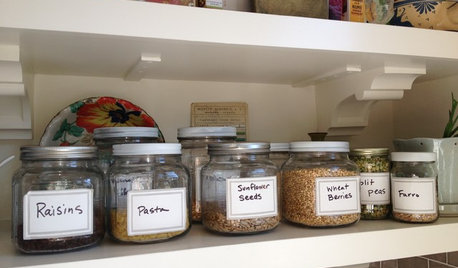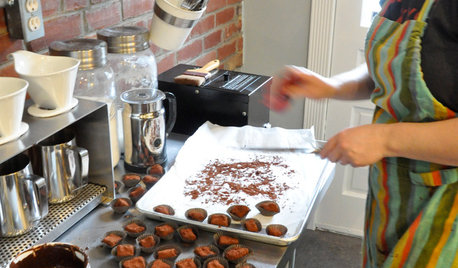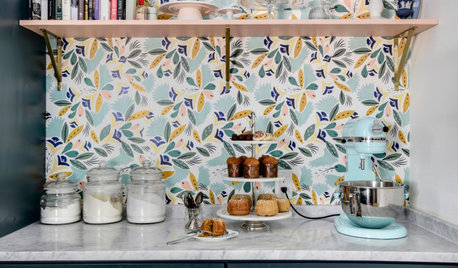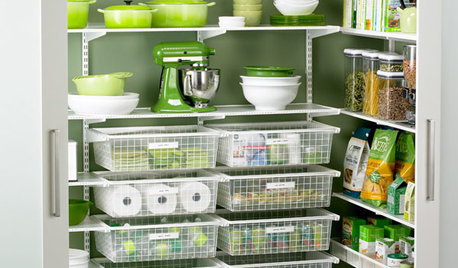Newbie canning rhubarb w/ sugar question?
silverwind
12 years ago
Related Stories

KITCHEN STORAGEArtful Organizers: Jars for Pretty Pantry Displays
Ditch the disheveled look of mismatched boxes and bags for colorful or clear pantry jars in an appealing arrangement
Full Story
KITCHEN DESIGNLove to Cook? We Want to See Your Kitchen
Houzz Call: Show us a photo of your great home kitchen and tell us how you’ve made it work for you
Full Story
GARDENING GUIDES10 Easy Edibles for First-Time Gardeners
Focus on these beginner-friendly vegetables, herbs, beans and salad greens to start a home farm with little fuss
Full Story
FARM YOUR YARDHouzz Call: Home Farmers, Show Us Your Edible Gardens
We want to see where your tomatoes, summer squashes and beautiful berries are growing this summer
Full Story
KITCHEN APPLIANCES9 Places to Put the Microwave in Your Kitchen
See the pros and cons of locating your microwave above, below and beyond the counter
Full Story
FEEL-GOOD HOME12 Very Useful Things I've Learned From Designers
These simple ideas can make life at home more efficient and enjoyable
Full Story
KITCHEN DESIGN12 Items Worth a Spot on Your Kitchen Counter
Keep these useful tools and accessories out in the open to maintain high function without spoiling the view
Full Story
PRODUCT PICKSGuest Picks: 21 Nifty Pantry Organizers
Just say no to pantry chaos with these containers, racks, bins and other storage wonders
Full Story
MOST POPULARHouzz Quiz: What Style of Kitchen Should You Have?
Should you be cooking up a storm in a modern, traditional, farmhouse or another style of kitchen? Take our quiz to find out
Full Story
HOUSEKEEPINGThe Quick and Easy Way to Clean a Microwave
All you need is water and a couple of other natural ingredients to get your appliance sparkling and smelling fresh again
Full StoryMore Discussions






readinglady
silverwindOriginal Author
Related Professionals
Edmond Landscape Architects & Landscape Designers · Birmingham Landscape Architects & Landscape Designers · Woodinville Landscape Architects & Landscape Designers · Jackson Landscape Contractors · Manchester Landscape Contractors · Centereach Landscape Contractors · Cicero Landscape Contractors · Gaithersburg Landscape Contractors · Hurricane Landscape Contractors · Lees Summit Landscape Contractors · Mount Kisco Landscape Contractors · Pueblo West Landscape Contractors · East Hill-Meridian Roofing & Gutters · Hull Roofing & Gutters · Northbrook Driveway Installation & Maintenancedigdirt2
digdirt2
readinglady
silverwindOriginal Author
digdirt2